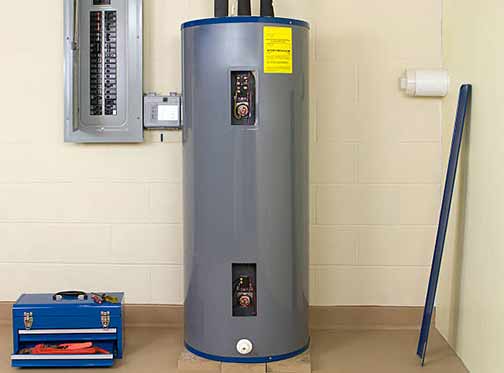
There are many reasons you would want to replace the water heater in your home. The most common ones are:
- The water heater is leaking. That will affect its performance, and water from the leak can damage your home.
- Your water heater is rusty, affecting the water quality you get; the water is rust-colored.
- The water heater is not heating as it should, and you have tried different solutions, but the problem remains.
- Your water heater makes a lot of noise, using more energy and taking longer to heat water.
- The water heater is older than eight years, and as per the manufacturer’s instructions, you think it is time to replace it.
As Keyrenter Wichita says, how you go about replacing the water heater in your home will determine its efficiency. You not only want to acquaint yourself with the various water heater options in the market and how much they cost to buy and operate, but you also want to ensure the new water heater is installed correctly.
Below is a step-by-step guide on how to replace your water heater most efficiently.
Choosing the right size of water heater
This depends on the size of your household. For tank water heaters, use this guideline: 1-2 people (23-36 gallons); 2-4 people (36-46 gallons); 3-5 people (46 to 56 gallons); 5+ people (56+ gallons). Add 10 gallons for each additional person. For tankless water heaters, use the flow rate to determine the right size for your home.
How much space do you have?
If you are upsizing your water heater, be sure you have enough space for a bigger water heater. Measure the space your current unit occupies and buy a water heater that matches those dimensions. If you have limited space, you may have to install a tankless water heater.
What kind of water heater should you buy?
You have four main options; electric versus gas water heaters and tankless versus storage water heaters.

These are more affordable and the easiest types of water heaters to install. Since they are not connected to a gas line, they require less maintenance.
Electric water heaters
These are more affordable and the easiest types of water heaters to install. Since they are not connected to a gas line, they require less maintenance. But electricity is costlier than gas, and electric water heaters are slower than gas water heaters.
Gas water heaters
The installation takes more time, and you need more experience to install these systems. Gas water heaters let you save on energy costs, and they are not affected by power outages. They are more efficient than electric water heaters but cost more. There are more safety concerns with gas water heaters (gas leaks).
Storage water heater
Tanked systems give you water on demand but take up more space. Because they have to reheat the water in the tank to keep it hot, they use more energy. They don’t take as much time to heat as tankless systems but need more maintenance.
Tankless water heaters
These take up a fraction of the space used by storage water heaters. Because they don’t store hot water, you cannot use the shower, dishwasher and laundry machine at the same time. They require less maintenance but take longer to heat water.
Water heater installation steps
Turn off the power or shut the gas line
The first thing is to ensure your safety. If your current water heater uses electricity, turn off the circuit breaker at the panel. For gas water heaters, look for the shut-off valve and turn it clockwise to stop the gas supply.

Shut off the water supply to your house by closing the water main shutoff valve. On the water heater, turn the water control valve to the off position.
Turn off the water supply
Shut off the water supply to your house by closing the water main shutoff valve. On the water heater, turn the water control valve to the off position. Open all the faucets in your home to drain any hot water in the system. Keep the faucets open.
Drain the tank
To drain your old water heater, connect a hose to the drain valve at the bottom and run the other end of the hose to an area outside the house or into an empty bucket. Open the valve and wait until the tank is empty.
Disconnect all connections and water
Disconnect all electrical connections. If this is a gas water heater, the lines may be soldered together, and you will need a tubing cutter to separate them. Loosen the screw holding the water pipe and disconnect the pipe (do this gently).
Replace the water heater
Be careful not to hurt yourself when moving the old water heater. To connect the new one, place it where the old one was. Follow the manufacturer’s instructions for gas and electric hookups. Do the above steps in reverse.
Lastly, do not forget to create a program for regular maintenance of your water heater. Also, if the steps described above are too hard to follow, please hire a professional plumber to help you with the purchase and installation of your new water heater.